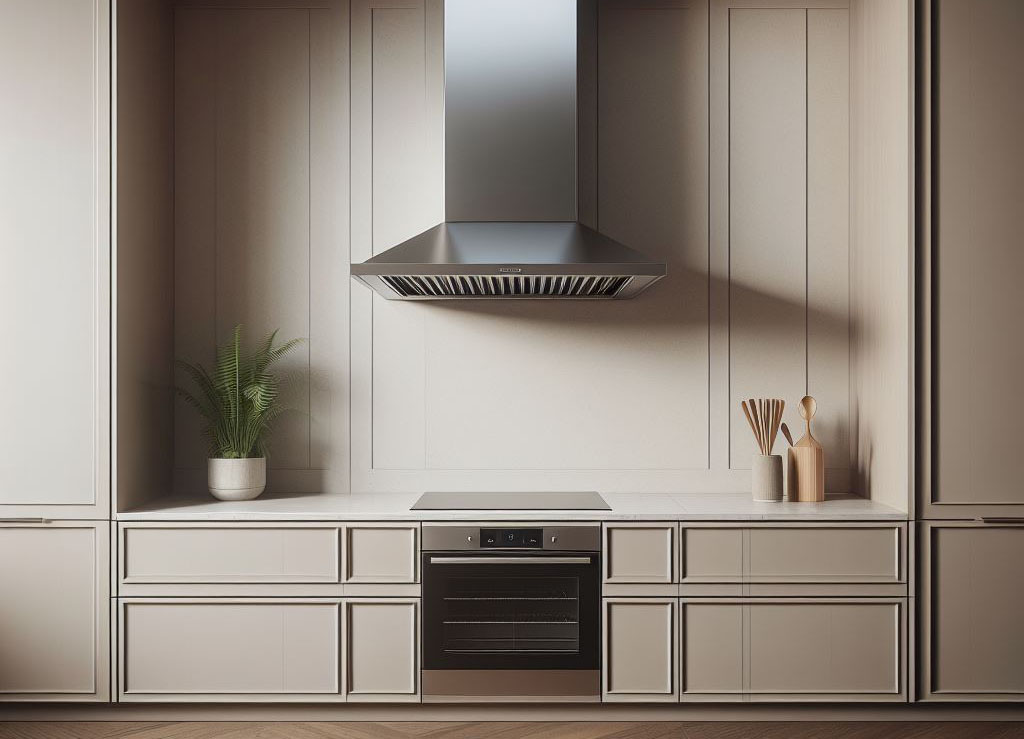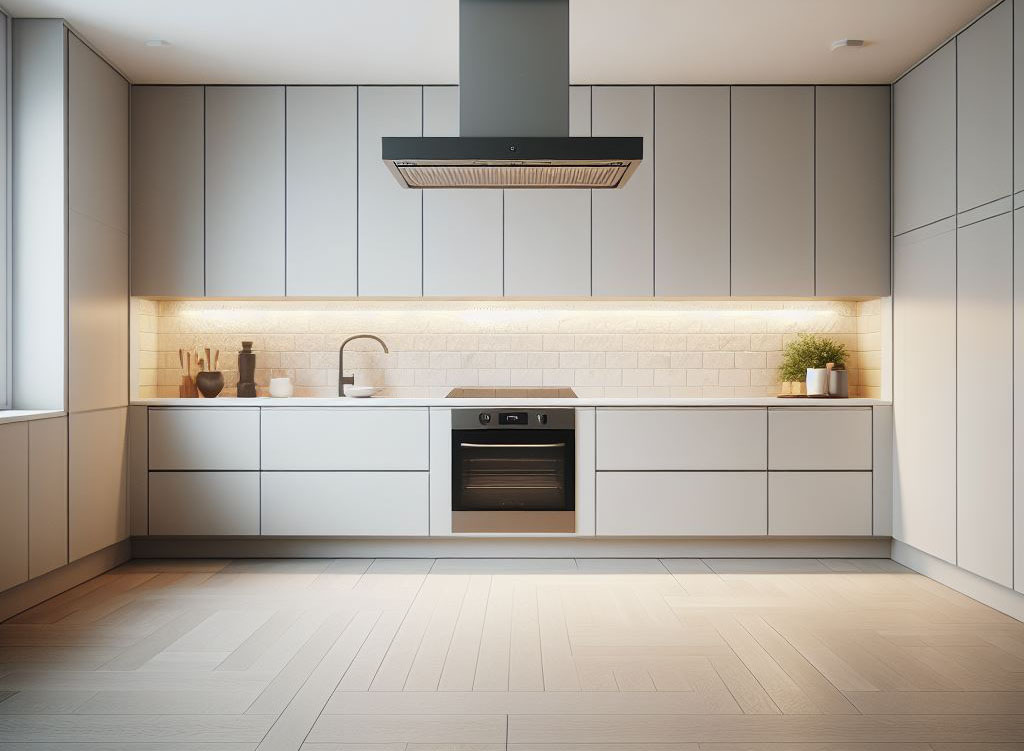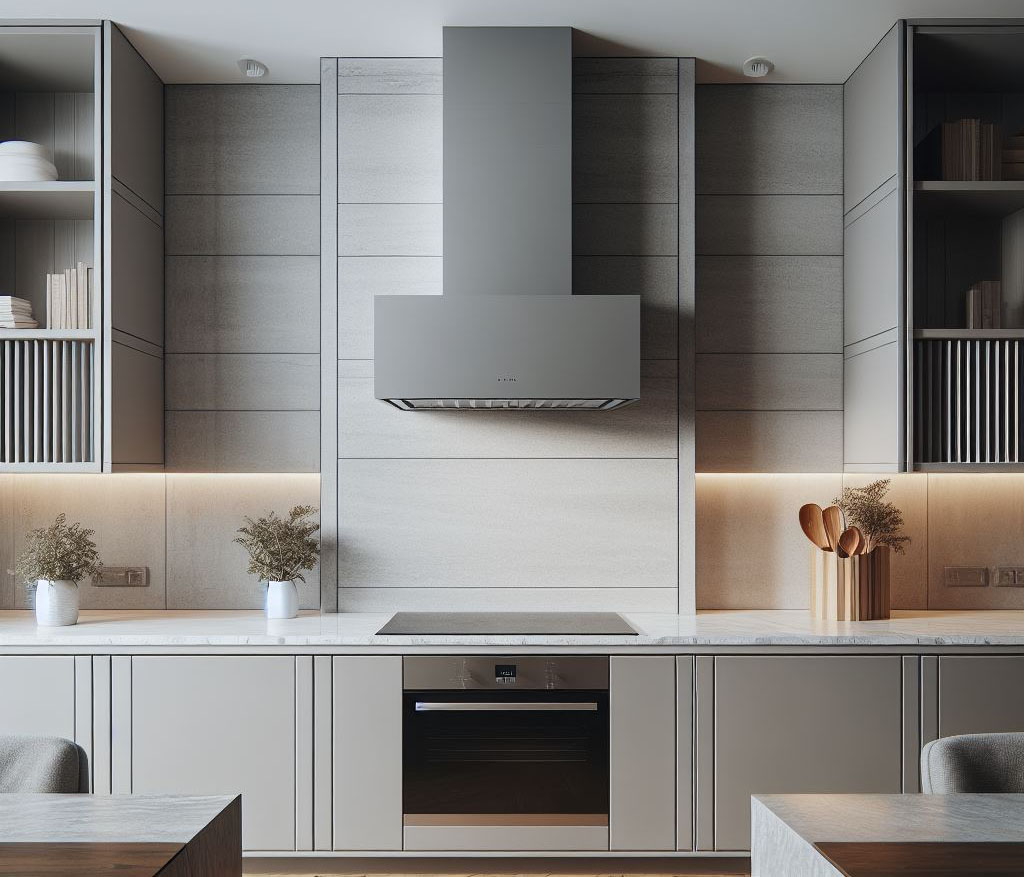Navigating the complexities of kitchen vent hoods can be akin to setting foot in a well-stocked workshop—you need to know what tools you have at your disposal and how best to use them. Think of a kitchen vent hood as a critical tool in your arsenal, pivotal not just for its functional role in dispatching smoke, grease, and odors, but also for maintaining the health and integrity of your home. In this realm, you’ll encounter primarily two types of hoods: ducted and non-ducted. The choice between them hinges on understanding their distinct roles in preserving your kitchen’s air quality—ducted hoods excel in venting irritants directly outside, offering a robust solution for heavy cooking, while their non-ducted counterparts focus on filtering and recirculating the air within your kitchen space.

The Basics of Kitchen Vent Hoods
In the heart of your kitchen, the vent hood stands as a sentinel, tasked with the mission of guarding your space against the assault of culinary byproducts. Whether you opt for a ducted model, which channels kitchen fumes to the outdoors, or a non-ducted one, which purifies and recirculates the air, hinges on your specific needs and constraints. Both share a fundamental anatomy: the exhaust fan, the dynamic force that drives away unwelcome kitchen air, the filter, a silent guardian capturing grease and particulates, and for ducted hoods, the ductwork, serving as conduits to ferry unwanted air to the exterior.
Choosing the Right Kitchen Vent Hood
Embarking on the journey to select the perfect kitchen vent hood requires a thoughtful assessment of several key factors:
- Kitchen Size and Stove Type: Match the scale of your hood to the size of your kitchen and the type of your stove. It’s about ensuring the capacity of your hood aligns with the volume and intensity of your cooking.
- Cooking Frequency: Your cooking routine should dictate the prowess of your hood. Regular culinary escapades demand a more robust system to keep up with the frequent onslaught of smoke and odors.
- Personal Style: The aesthetic harmony between your vent hood and the rest of your kitchen shouldn’t be overlooked. Whether you seek a hood that makes a bold statement or one that melds discreetly with its surroundings, it should resonate with the overall character of your kitchen.
When weighing the merits of ducted versus non-ducted hoods, consider the direct, forceful approach of ducted hoods in air extraction, against the installation ease and flexibility of non-ducted models. Aesthetic considerations also play a crucial role—your hood should not only perform efficiently but also elevate the visual appeal of your kitchen, complementing its design ethos and enhancing its ambiance.
In the end, selecting the right kitchen vent hood is a balance of practical considerations and personal preference, much like choosing the right tool for a particular job. A carefully chosen and well-installed hood not only enhances the functionality of your kitchen but also contributes to the creation of a space that is a joy to cook in and a focal point for life at home. Remember, a kitchen that breathes well is the cornerstone of a healthy, vibrant home.

Installation Insights
Embarking on the installation of a kitchen vent hood is a venture that demands precision and a keen understanding of your workspace. Before diving in, ensure that every measurement is meticulous, and the selected spot not only suits your kitchen’s layout but also supports efficient venting. Familiarizing yourself with the existing ductwork layout is akin to reviewing a well-drawn blueprint—it guides your steps and informs your strategy.
Step-by-Step Guide on Installing a Ducted Range Hood
- Preparation: Prioritize safety by disconnecting your kitchen’s power supply. If replacing an existing hood, remove it with care and clean the area, setting the stage for a fresh installation. Inspect and prepare the venting route. Remember, the efficiency of your hood hinges on the directness and integrity of the ductwork.
- Marking the Spot: Position the new hood precisely, marking the drill points with precision to ensure a flawless fit. Proceed with drilling, and prepare the wall for the hood’s installation with sturdy anchors if necessary.
- Ductwork: Attach the ducting to your hood, ensuring an airtight connection. Any leaks here can compromise the system’s efficiency. Seal all joints meticulously, using either duct tape or clamps, to ensure an unbroken path for the air to exit.
- Wiring: If you’re well-versed in electrical work, proceed with caution, adhering to the manufacturer’s guidelines. If electricity is not your forte, this is the juncture to enlist professional help. Precision in this step is non-negotiable.
- Finishing Up: Secure the hood, confirming its alignment and ensuring it’s anchored solidly. Restore the power and initiate a trial run, remaining vigilant for any anomalies in sound or functionality.

Maintenance and Troubleshooting
Regular upkeep is the secret to the longevity and efficacy of your kitchen vent hood. A monthly degreasing of the filters and a wipe-down of the exterior keeps the system in prime condition. Be attuned to changes in noise or performance—these are often the first whispers of an issue that may need attention.
If you encounter performance hiccups, commence your troubleshooting with the basics—check for clogged filters or obstructed ductwork. Often, a thorough cleaning resolves these issues. However, if the problem persists or seems to be electrical in nature, it’s prudent to consult a professional. Timely intervention can prevent a minor hiccup from escalating into a full-blown malfunction.
Innovations in Kitchen Ventilation
The landscape of kitchen ventilation is continually evolving, with modern advancements offering solutions that blend efficiency with aesthetics. Contemporary vent hoods boast features like noise reduction, ensuring your culinary activities don’t interrupt the kitchen conversation, and energy-efficient designs that contribute to a greener home. The integration of smart technology introduces a new layer of convenience, allowing for seamless operation and even connectivity with other smart home devices.
FAQ Section
Regular maintenance, such as monthly cleaning and bi-annual filter replacement, is typically sufficient. However, this may vary based on the intensity of your kitchen activities.
A DIY installation is feasible for those with a solid grasp of the process and tools. However, if you’re uncertain, especially about the electrical aspects, professional installation is advisable.
Ducted hoods are designed for direct external venting, offering robust air clearance, while non-ducted models recirculate filtered air back into the kitchen, making them more flexible but generally less effective in removing smoke and odors.
The hood should at least match the width of your stove and be capable of handling the volume of air in your kitchen space. Balance is key—your hood should be powerful enough to maintain air quality without overwhelming your kitchen’s design.
Yes, modern vent hoods with low sone ratings offer effective ventilation while minimizing noise, ensuring your kitchen remains a convivial space even during bustling cooking sessions.
